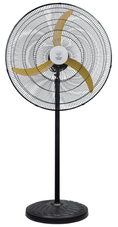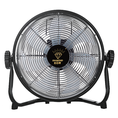Lights
A ceiling fan can do double duty when it is combined with lighting. If the ceiling fan of your choice does not have lighting, do a little investigating. The same company may sell a lighting kit that will fit your fan. There are three common styles of lighting:* Dome lighting resembles an upside down dome placed where the blades meet at the middle of the fan.* Branched lighting on a ceiling fan looks like two or more tiny spotlights attached to the middle of the fan. Often these lights can be adjusted to light a specific part of the room.* Dimmer lights are another option. The dimmer function can be incorporated into the fan's wall or remote control.
Efficiency
Energy-efficient fans must have an Energy Star rating, which is a certification given by the U.S. government. Energy Star rated fans are not any more expensive than non-energy-efficient fans, but they will save you on energy bills.
Motor
The motor on your ceiling fan will determine how powerful and energy efficient it will be. There are two kinds of motors:
Alternating Current (AC motor): This is a standard motor which uses an alternating current to power the fan.
Direct Current (DC motor): This is a more advanced motor that is designed to be up to 70 percent more efficient and quiet than standard motors. Fans with this type of motor often cost more.
Controls
Conventionally, ceiling fans come with pull cords for on-off operation. However, recent models also use wall-installed or handheld remote controls to make operating a ceiling fan easier.
Wall controls turn fans and lights on and off, dim the lights, or adjust the fan speed easily when you enter or leave a room. You can adjust the fan and lights from the comfort of your favorite chair with a remote control.

















